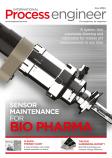Stephen Hayes reveals how PC control can integrate these technologies in one software.
While the buzz around the metaverse has only recently gained momentum, virtual reality has been around for decades. However, virtual and augmented reality (VR/AR) are now being adopted in the manufacturing industry, revolutionising complex product development by increasing quality and saving time.
Extended reality (XR) technologies such as AR and VR take the capabilities of computer-generated display, sound, text and effects to enhance the user’s real-world experience. Although AR uses a real-world setting and VR generates an imaginary version of reality, both technologies can be implemented in different steps of manufacturing. Combining these technologies with IoT and AI offers great potential in many areas, including product design and development, logistics, machine maintenance and customer support.
As products become more complex, their components often increase in number and sometimes decrease in size. This makes the manufacturing process more difficult and tedious for workers that try to perform tasks rapidly. Now, some assembly processes can be assisted by AR-guided interactive work instructions to speed them up and reduce human errors, making the job more enjoyable for employees.
Furthermore, AR can create an interactive and immersive training experience, allowing workers to understand concepts effortlessly. Although engineers are still developing these technologies, it is estimated that soon they could be controlled remotely, allowing factory workers to have a healthier work-life balance.
From a product development perspective, VR and AR help to optimise and test designs at an early stage without incurring repeated prototyping costs, which can drastically reduce profit. With a mixed reality prototype, companies are able to test products with expert users and gain valuable insights far earlier than with traditional processes, resulting in rapid design cycles and high-quality products.
AR in the smart factory
In a smart factory environment, AR sensors collect data to maintain efficiency in production areas, storage facilities and warehouses. This technology, in combination with IoT, provides workers with real-time information about products like location, stock or condition. This data also allows manufacturers to make accurate decisions and quickly identify opportunities to reduce waste, minimising the carbon footprint of their installations.
With the industry starting to adopt AR and VR technologies, it’s important that manufacturers choose a PC-based control system that is compatible with technologies of the future, like these. Beckhoff’s cloud-based solution, TwinCAT, has extension modules that are compatible with various third-party software to allow for integration with Beckhoff hardware and software. This platform consists of runtime systems for program execution and the engineering environments for programming, diagnostics and configuration.
By integrating VR and AR into the supply chain and connecting equipment, manufacturers can get both higher productivity and improved quality. Although extended reality is still developing in the manufacturing sector, it’s likely that it will become more widely used in the years to come. By investing in the right control technology now, manufacturers will be prepared when the time comes for them to integrate.
Stephen Hayes is MD of Beckhoff UK.


















